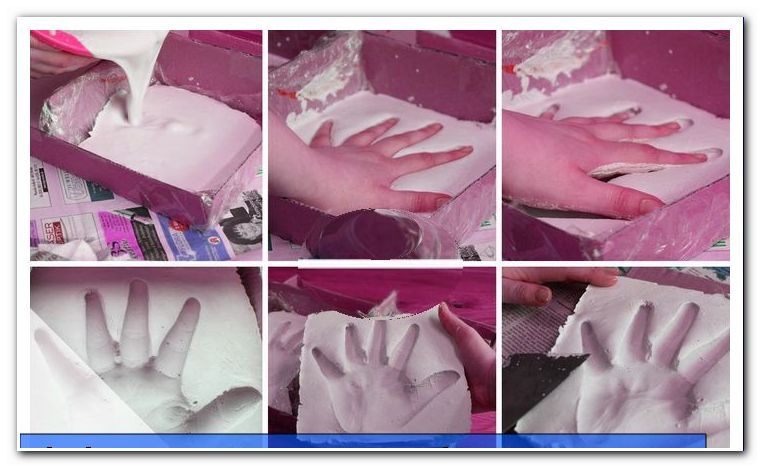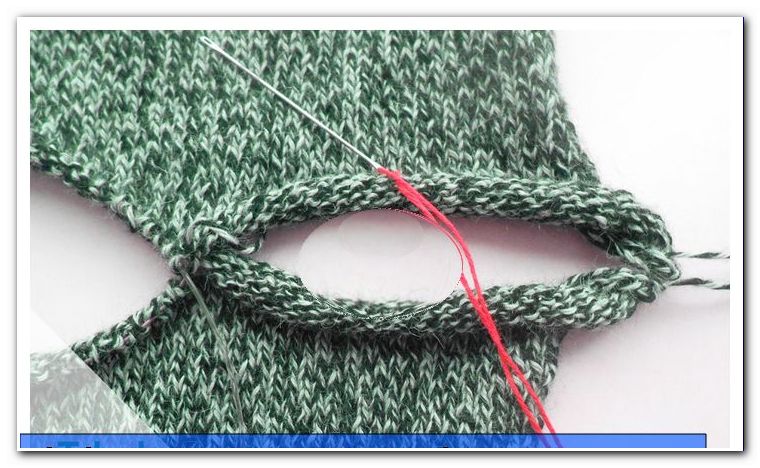Fretwork - basics and templates

With jigsaws you create magical decorative elements made of wood - whether for festive occasions or simply for the pleasure of crafting and doing it yourself. This guide introduces you to the world of fretwork - with general information and all sorts of practical tips so that after reading the article you can buy all the necessary utensils and then start your first project. Here we go!
You will find window pictures and wooden figures beautiful and would like to create a corresponding work of art yourself "> 
content
- Basics
- Tools
- Jigsaw (jigsaw)
- scroll saw
- Laubsägeblätter
- plywood
- Additional tools
- Instructions | Procedure for fretsawing
- Motifs | Templates for beginners and advanced
Basics
What do you actually do with fretsaw "> 
We have made our Talu handicraft templates for jigsaws available to you for free download!
Free Download Fretwork basics Templates for beginners
Free Download Fretwork basics Advanced templates

Tools
Tools and wood for fretwork
In the following we name and describe the tools and the wood - that is, everything that is required for fretwork.
Jigsaw (jigsaw)
The fretsaw is a special tool with a wooden handle and a U-shaped bracket (tubular steel or square tubular steel). Screw terminals are attached to the ends of the latter. Clamp the respective jigsaw blade between these clamps.
Tip: When buying, make sure that the wooden handle is ergonomically shaped and lies well in the hand.
Special fact:
- the fretsaw was invented in Italy
- it got its name because it was originally intended to decorate wooden objects ("marquetry"), which often had a leaf shape
There are various sizes of jigsaws available for purchase:
- 200 to 300 millimeters for small to medium-sized jobs (beginners and children)
- 400 to 500 millimeters for larger jobs (advanced and professional)

Info:
- the size of a fretsaw is called a throat
- this tells how far you can get when sawing without being hindered by the outer arch
scroll saw
The electric fretsaw
In addition to the classic, "conventional" fretsaw, with which you can make your fretwork completely by hand, there is also the electric fretsaw - the scroll saw.
The big advantage with a scroll saw:
When sawing, you do not have to make sure that the correct cutting angle is maintained.

The big disadvantage:
High quality scroll saws often cost at least 100 euros, while normal fretsaws are in many cases already available for a tenth of the price. Scroll saws are used for fine cutting work, not only in the processing of wood, but also of plastic or metal. There are entry-level models that are aimed at ambitious hobbyists, as well as high-quality machines for carpentry, other workshops and industry.
You can see what the scroll saw can do, especially when cutting very narrow radii. With such a saw, you can machine filigree cutouts and fine contours particularly precisely and quickly.
Important: In contrast to acting with a fretsaw, when working with a scroll saw you only move the workpiece on the saw table. The saw blade is firmly clamped - it moves up and down through a saw arm.
Tip: In addition to special machine saw blades, you can use commercially available (cheaper ...) fret saw blades on most devices. Retrofitting with an adapter may be necessary.
What to look for when buying a scroll saw:
- stable construction with robust saw arms including high-quality plain bearings
- logically arranged and smooth operating elements
- Practical extras: blowing device, vacuum cleaner connection, swiveling work table, quick release for the saw blade, stroke rate control
- Well- known, good manufacturers (selection): Hegner, Einhell, Scheppach, Jet, Rexon
Attention, the scroll saw is a machine saw, i.e. an electrical device . That is why we have briefly summarized the most important information on the correct handling of a scroll saw.
- wear safety glasses
- DO NOT work with gloves
- do not wear loose / loose clothing
- do without jewelry
- Keep children away
- Always press the workpiece flat on the saw table with both (!) Hands
- Ensure a good view of the workpiece (optimal blowing device)
When sawing with a scroll saw, the rapidly moving jigsaw blade can cause serious injuries . For this reason, you should follow the instructions above.
Tip: We advise beginners to buy an entire jigsaw set. This should consist of a board as a base, a ferrule, jigsaw blades and, if necessary, other accessories. Such sets are available from around 13 euros - in local handicraft shops as well as in various online shops.
Recommendation:
If you are enthusiastic about jigsaws, you can also get a scroll saw. This enables even finer fretwork and results.

Laubsägeblätter
In order to start anything with the jigsaw arch, i.e. to be able to saw wood, you also need a jigsaw blade. Such saw blades are available in many different versions. There are jigsaw blades for particularly fast, very precise or filigree sawing. A distinction is made between round and straight jigsaw blades. Round jigsaw blades make it possible to saw tight radii and fine contours in all directions.
Tip: When sawing with a round jigsaw, you must always make sure that you keep the saw line. Unfortunately, the leaf tends to "swim" quickly. It is therefore easy to stray from the right path at times when there is no concentration.
Jigsaw blades in particular make it possible to saw very quickly.
Note: Both round and straight jigsaw blades can be found in different forms (single, double tooth, with counter tooth) and strengths as well as with different numbers of teeth. Speaking of the number of teeth: the higher the number of teeth (tooth pitch), the faster the jigsaw blade cuts.
Tip: A jigsaw blade with a counter tooth prevents the wood on the underside from tearing out.
When buying, as a beginner, it is best to only pay attention to the specified sizes of the jigsaw blades.
Usually when you compare, you come across numbers like this:
- 2/0
- 0
- 1
- 2
- 3
- 4
- 5
- 6
- Etc.
Thin, fine-cutting jigsaw blades have low numbers such as 2/0, 0 or 1. Furthermore, they usually have a high tooth pitch . The focus is on the exact saw cut, not the speed. A narrow width of the saw blade is essential for delicate fretwork.
Tip: Medium sizes such as 3 or 4 are ideal for beginners in fretwork. We advise you to use finer saw blades (under 3) only as an advanced user - otherwise inexperience can cause the blades to break quickly. But: Try round AND straight saw blade shapes. This is the only way to get a feel for the different variants and to learn how to deal with them.
The thickness of the wood to be processed also plays a role:
- Sizes 2/0 to 3 for thin wood
- Size 4 or higher for thick wood
The overall length of classic jigsaw blades is usually around 13 centimeters. You can usually use such conventional models in hand saws as well as scroll saws.
plywood
For your fretwork, you can, for example:
- Birch plywood,
- Poplar plywood or
- Beech plywood
use. Birch and poplar in particular are easy to process. Adjust the wood thickness on the one hand to your abilities and on the other hand to the motif to be sawn.

Our tip: Beginners are easiest to do with medium-thick wood (no / low risk of breakage, no excessive effort when sawing). But we also recommend (and other experts) experienced sawmakers not to use plywood that is too thin. In practice, it has been shown time and again that medium-strength wood is robust and particularly durable. Medium-thick wood is about five to eight millimeters thick.
Additional tools
In addition to the basic elements (jigsaw, jigsaw blade and plywood), the following tools may be necessary or practical.
- Jigsaw board with screw clamp (as a stabilizing base and work aid, is attached to the table - has a V-shaped opening on the front)
- Spray glue or paper glue stick (for transferring the template to the wood)
- small wood drill, drill bit or cordless drill (for precise machining of internal recesses)
- File or sandpaper in several grits (for reworking the sawn wooden parts)
Instructions | Procedure for fretsawing
Step 1: Attach your jigsaw board to the table top with a clamp (alternatively to the workbench if you have one). The front with a V-shaped opening must face the outside edge of the table.

Step 2: Clamp your selected jigsaw blade between the screw terminals of your jigsaw arch.
In detail:
- First attach the jigsaw blade to a screw terminal
- then squeeze the U-bend a little so that the other end of the jigsaw blade extends to the second screw terminal
- Fasten this other end of the sheet by tightening the screw clamp
Important: Always make sure that the steep side of the blade teeth is facing the handle of the saw. It is also important to ensure that the jigsaw blade is not tightened too tightly - otherwise it could break.
Pro tip: Experienced tradesmen determine the correct tension of the saw blade acoustically. You pluck the jigsaw blade briefly with your finger and listen to the sound. While this is deep or clinking on a weakly tensioned sheet, it tends to sound bright and clear when tensioned correctly.
Step 3: Glue the motif to be sawn (painted on paper or printed) with spray glue or paper glue stick on the plywood.
Note: You then saw directly through the template. In the end, simply peel off the paper residue. A damp cloth may help you with this.
Step 4: Place the prepared plywood on the jigsaw board.

Step 5: Drill holes in all recess areas (works with a drill bit). It is important that you do not drill the holes too close to the edge.

Step 6: Now the pleasure of sawing can begin. Take your fretsaw in your stronger hand. The wooden handle and the teeth of the saw blade point downwards. With the other hand, hold the workpiece and guide it in the desired direction.

Sawing tips:
- place the saw at a slight angle when making the first cut (simplifies starting)
- move the fretsaw up and down
- Guide the jigsaw blade continuously to the workpiece so that it does not tilt
- saw without pressure - the goal is loose and even sawing movements
- when changing direction, turn the workpiece, not the saw
- with narrow radii you should saw with small up and down movements
- when pulling back the fretsaw, saw movements must also be carried out
- saw the motif directly through the glued template
- always saw the motif from the inside out
Note: Internal cuts are the biggest challenge for beginners. To do this, you need the jigsaw blade.
- first unclip from the fretsaw,
- then thread through the drilled hole and
- finally attach it to the fretsaw again.
Practice creates masters!
Step 7: Check the result. Are you not completely satisfied with some jobs "> 
Motifs | Templates for beginners and advanced
Here you will find varied templates for beginners and advanced users to download and print.
For beginners:
- heart
- Stars
- cloud
- bat
- deer
- Hedgehog
- Christmas tree
- tree

For advanced:
- tree
- bell
- tiger
- wolf
- automobile
Tip: Of course you can also draw your own motifs if you want.




